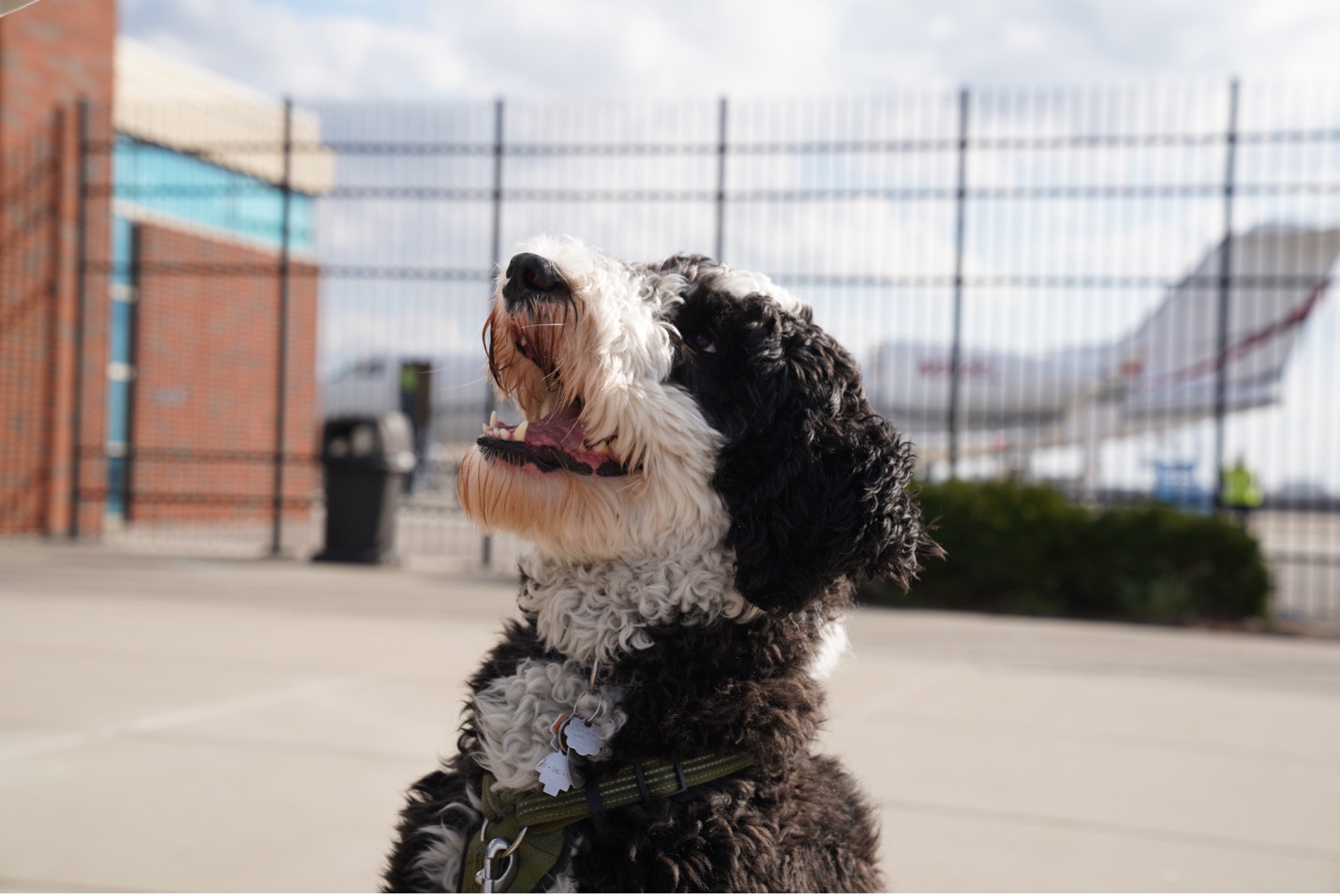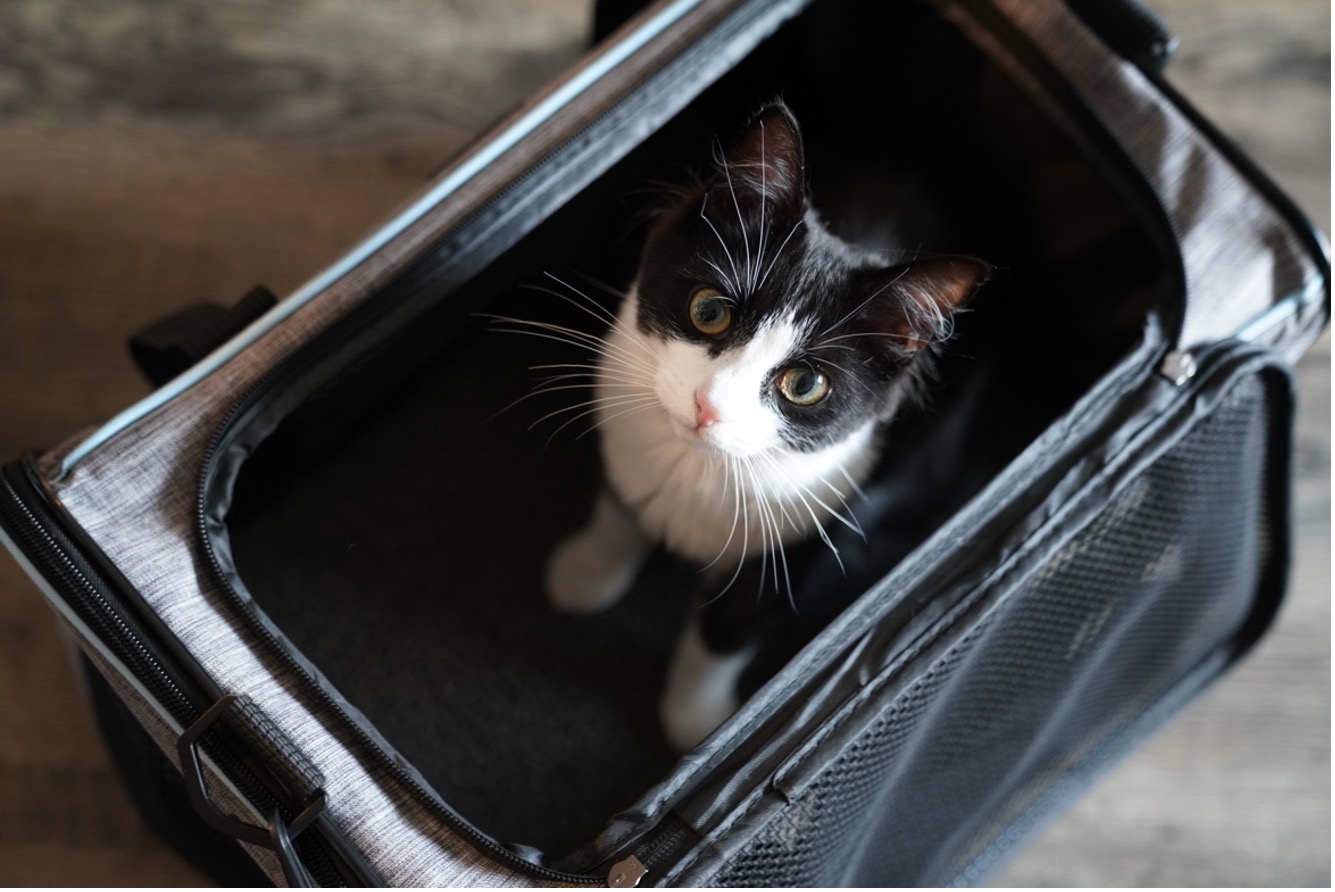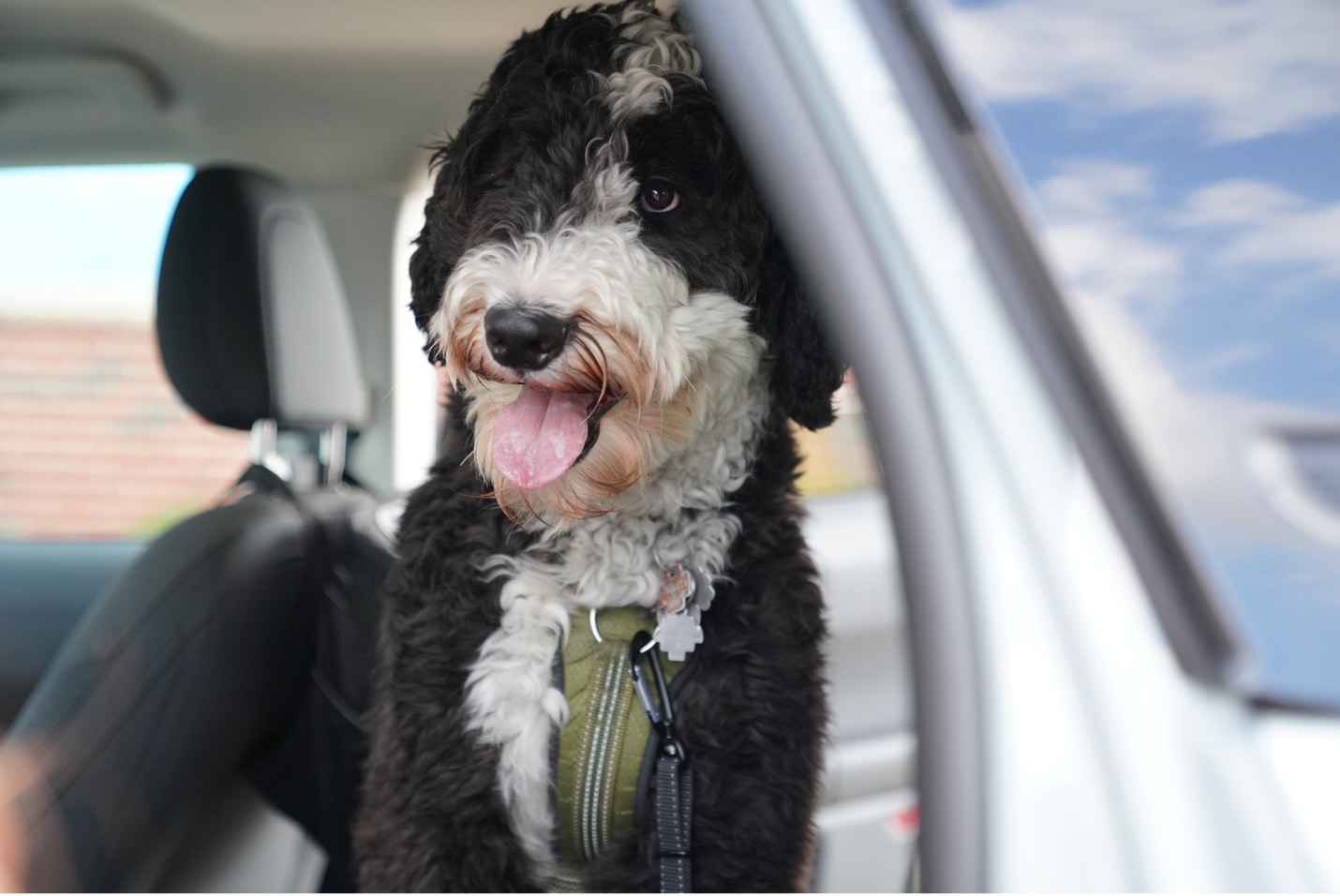Paws on planes: travel tips for a calm and happy companion
Spring Break is here, and students and families are gearing up to escape the cold. For those with pets, the choice to leave furry friends behind may be upsetting, but according to Candace Croney, director of the Center for Animal Welfare Science and professor of animal behavior and well-being in Animal Sciences and the Department of Comparative Pathobiology, this may be best for an animal’s well-being.
“I advise people to avoid air travel with animals unless absolutely necessary. The noise and cabin pressurization on a plane can be especially distressful to animals, particularly cats, who hate noise and change,” Croney said.
But what if it’s not feasible to leave your pet at home or in a kennel? Croney shares tips on how to give your pet (and you!) the safest and most relaxing travel experience possible.
Talk to your vet.
Ensure your animal is healthy before you travel. Prior to your visit, know what health records and paperwork are needed to travel so that you can get them from your vet.
Consider asking your vet for medicine to keep your pet calm or semi-sedated during travel, especially as you take them out of the carrier to go through airport security and while they are underneath the seat in the plane cabin. Try any medication ahead of time to see how best to administer it to your pet, when and if the medicine works for them.
If you and your pet are road-tripping it, for dogs and cats who suffer from motion sickness, a visit with your vet to obtain anti-nausea medication will help both pet and owner ride more comfortably.
“Pilling a pet, especially a cat, is...a job. They don’t always love liquid meds, either. But if this works, your pet will likely thank you and you’ll avoid ticking off your fellow passengers and ending up on the news as the person whose pet howled incessantly, soiled themselves, broke out of the carrier and got kicked off the flight. Okay, that’s extreme, but preparation ensures you avoid anything like this!”
- Candace Croney, director of the Center for Animal Welfare Science and professor of animal behavior and well-being in Animal Sciences and the Department of Comparative Pathobiology
Alleviate stress.
In addition to medicine from a vet, there are several products that can help alleviate stress in pets. For felines,
a product called Feliway can be sprayed in and on the carrier to help calm your cat.
When it comes to carriers, travelers have two options. Soft carriers are convenient for travel but aren’t as sturdy as a hard carrier.
“If your dog or cat responds to a carrier like a panicked tiger, they theoretically could scratch their way out or damage it enough that it is no longer secure, which is why you want to practice ahead of time.”
- Candace Croney
To familiarize your pet with being in a carrier, make the experience enjoyable with incentives like food. Enclose your pet in the carrier with their favorite treats for a few seconds at a time and work your way up to longer durations until your pet is comfortable. Practice sitting quietly next to or in front of your pet in the carrier just as you would on a plane.
Pets must also be familiar with wearing a harness, which may feel more natural to dogs who are used to being walked, but uncomfortable for cats. If you are flying, place a harness on your cat well in advance of the flight to get them used to wearing it, and attach a leash as you go through security to reduce the chance they may bolt. TSA requires pets to come out of their carriers and walk through security with their owner.
If traveling by car, ensure your pet is comfortable in a moving vehicle and practice in advance if needed. Ensure that they are in a safe carrier or sturdy harness that can be attached to a seatbelt in case of an accident.
Practice good plane etiquette.
If you are traveling by plane, book tickets well ahead of time and ensure that there is room on board for you and your pet. Keeping fellow passengers in mind, particularly those who may be allergic, is important.
"It’s a good idea to ask flight attendants or other staff to help ensure those seated near you are aware of and able to travel comfortably with a pet near them so that seats can be changed if needed. Consider taking OTC allergy meds with you as an emergency peace offering for those who will inevitably be allergic to your pet, as they may be sitting right next to or near you and seat changes aren’t always possible. There’s also a product called Allerpet that is a cat and dog dander remover. If you wipe your pet down with this ahead of time, it may give some relief to those around you with allergies."
- Candace Croney
Take safety precautions.
Before you go, ensure your pet has all their tags on them and is microchipped if possible. Carry a picture of them in case they get lost.
Avoid leaving your pets unattended in vehicles while traveling especially during high temperatures or humidity conditions, particularly if they are parked in areas without shade or shelter. Pets can overheat and experience other forms of thermal distress that can quickly become life threatening. Cold temperatures also pose a risk and weather that causes them distress they cannot cope with, like a fear of thunderstorms.) Furthermore, thefts of pets from vehicles can occur.
When it comes to larger dogs who cannot fit in the cabin of a plane, ground travel should be considered. Many airlines have restricted transport of dogs by air due to risk of adverse welfare outcomes that may occur at different times of year or under temperature extremes. Traveling as cargo can be highly distressful for pets given the noise, vibration, multiple unfamiliar people handling them and their carriers, separation from their owners, as well as other aspects of the cabin conditions that are new, unfamiliar and likely scary for pets.
"Any technology that allows you to track your pet should be considered and follow all other travel precautions diligently. For safety reasons, medicating pets prior to transport in the cabin may not be advised or permitted, so plan well ahead of time to ensure the best decisions can be made to protect the safety and comfort of your pet.”
- Candace Croney










